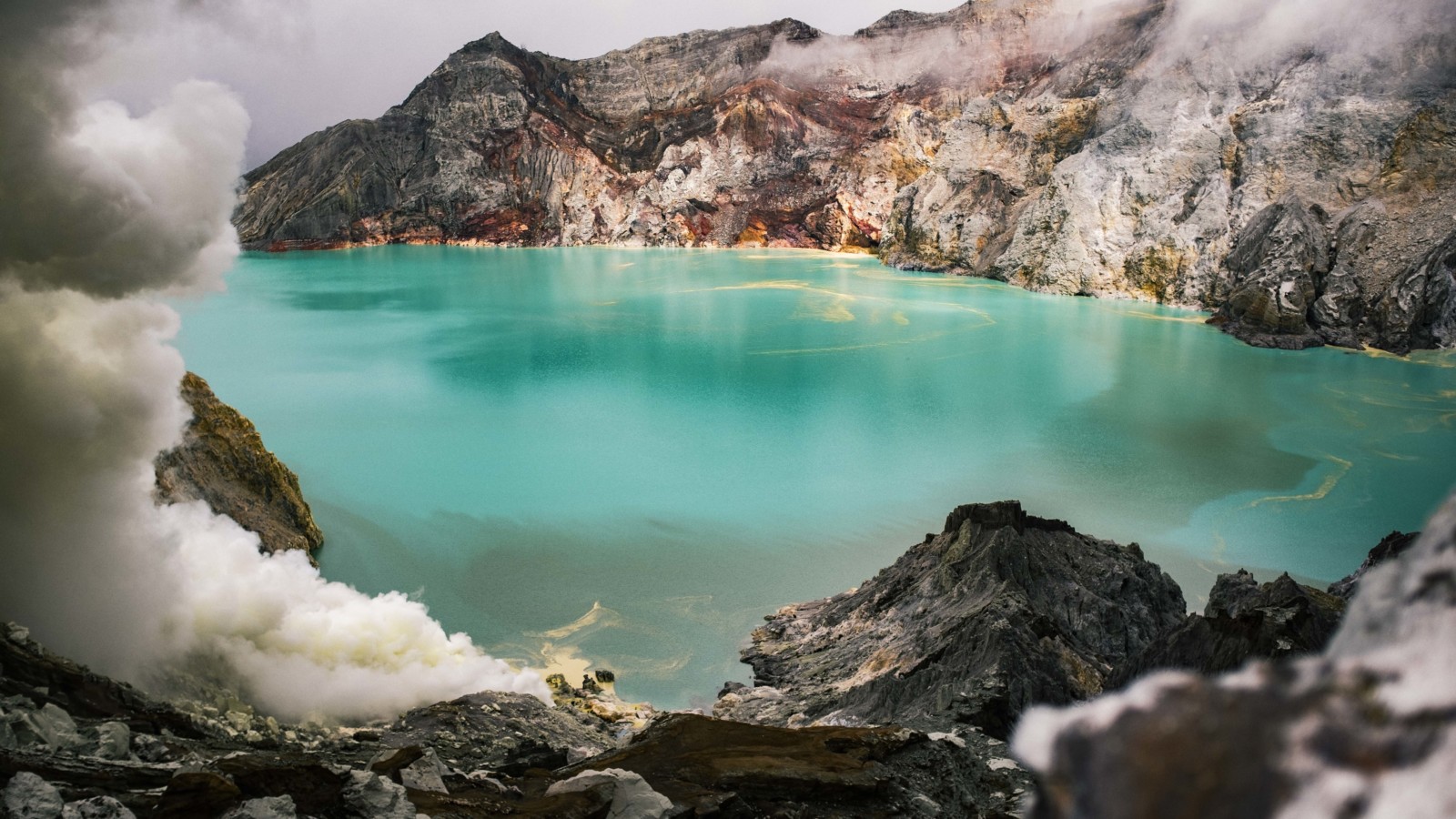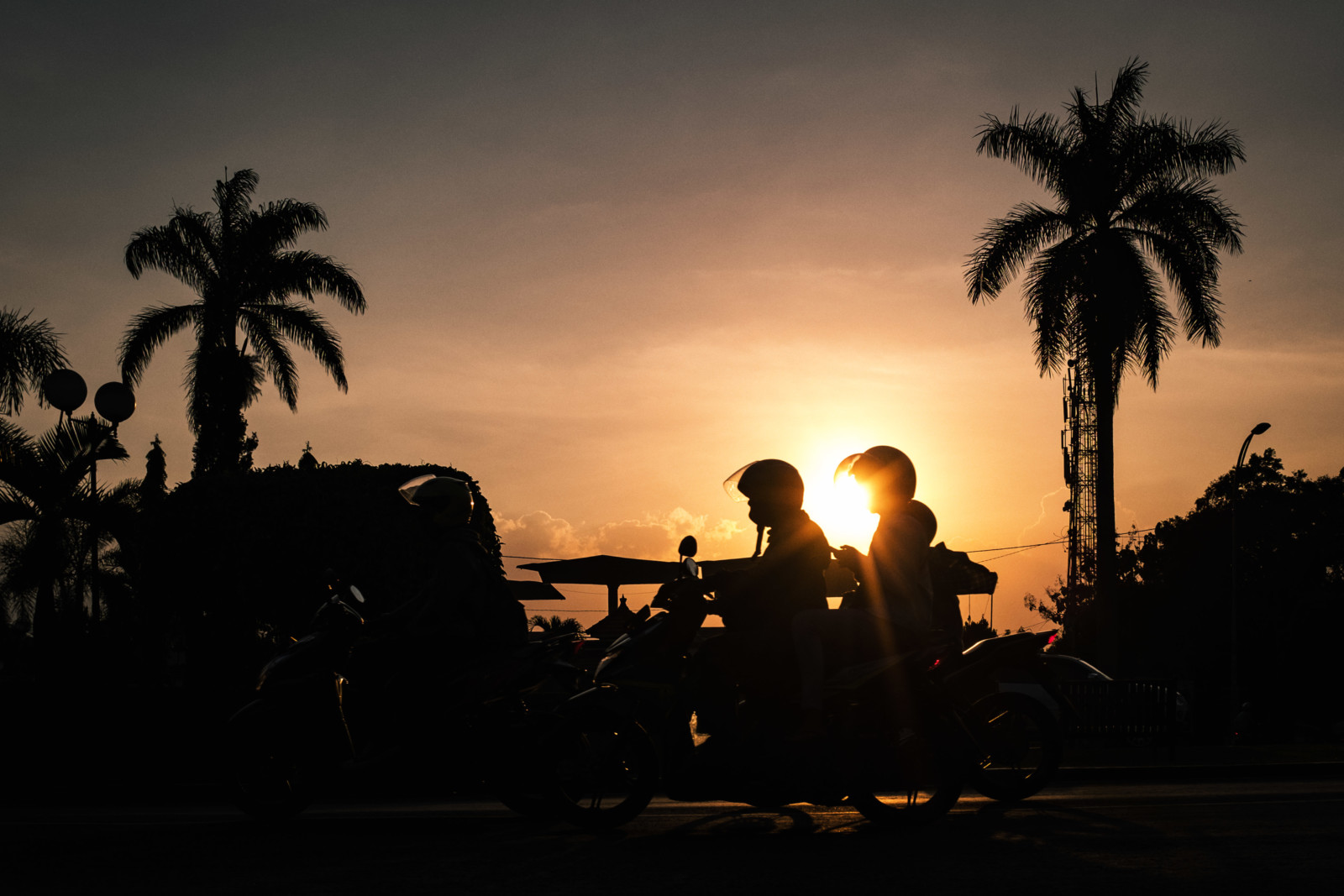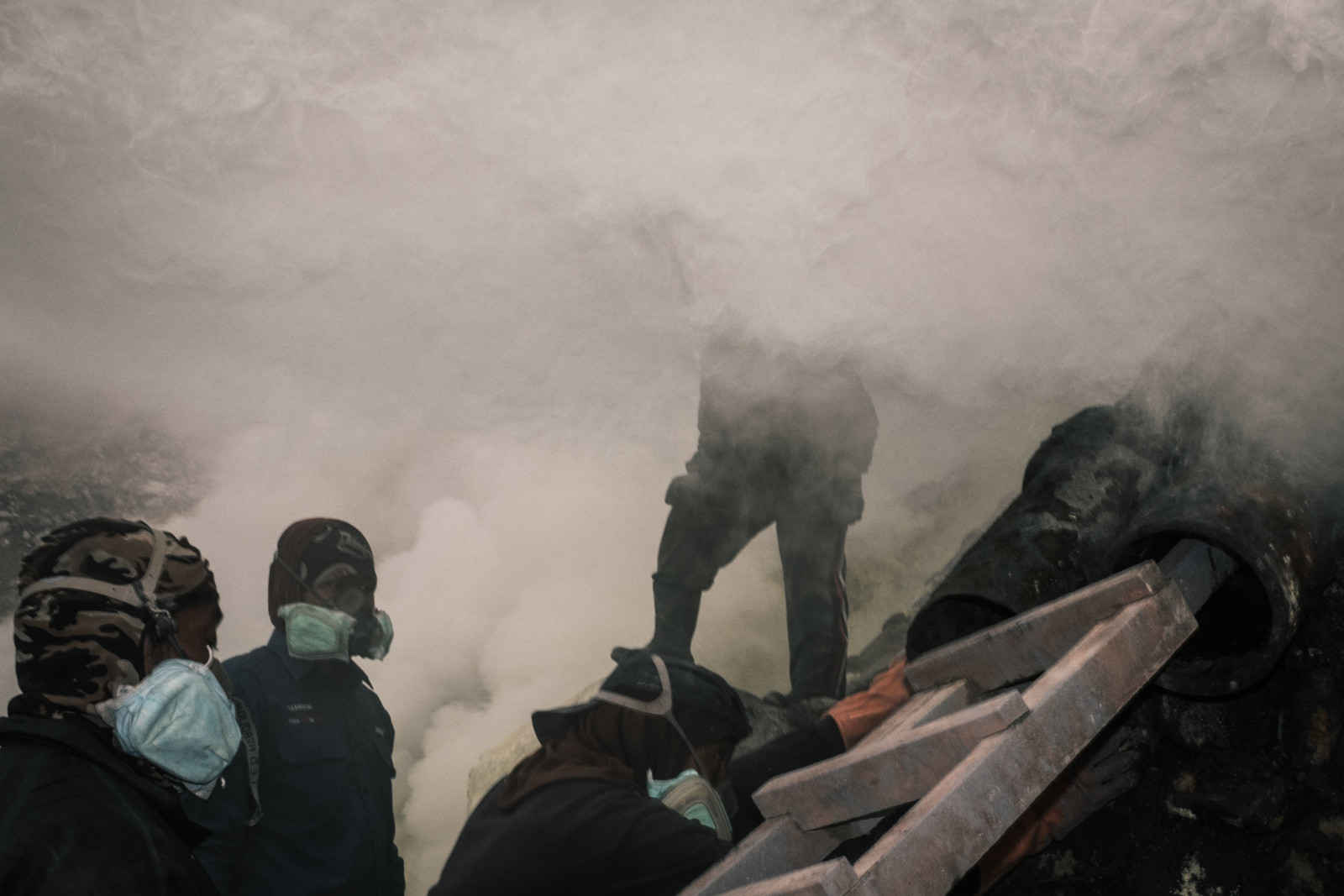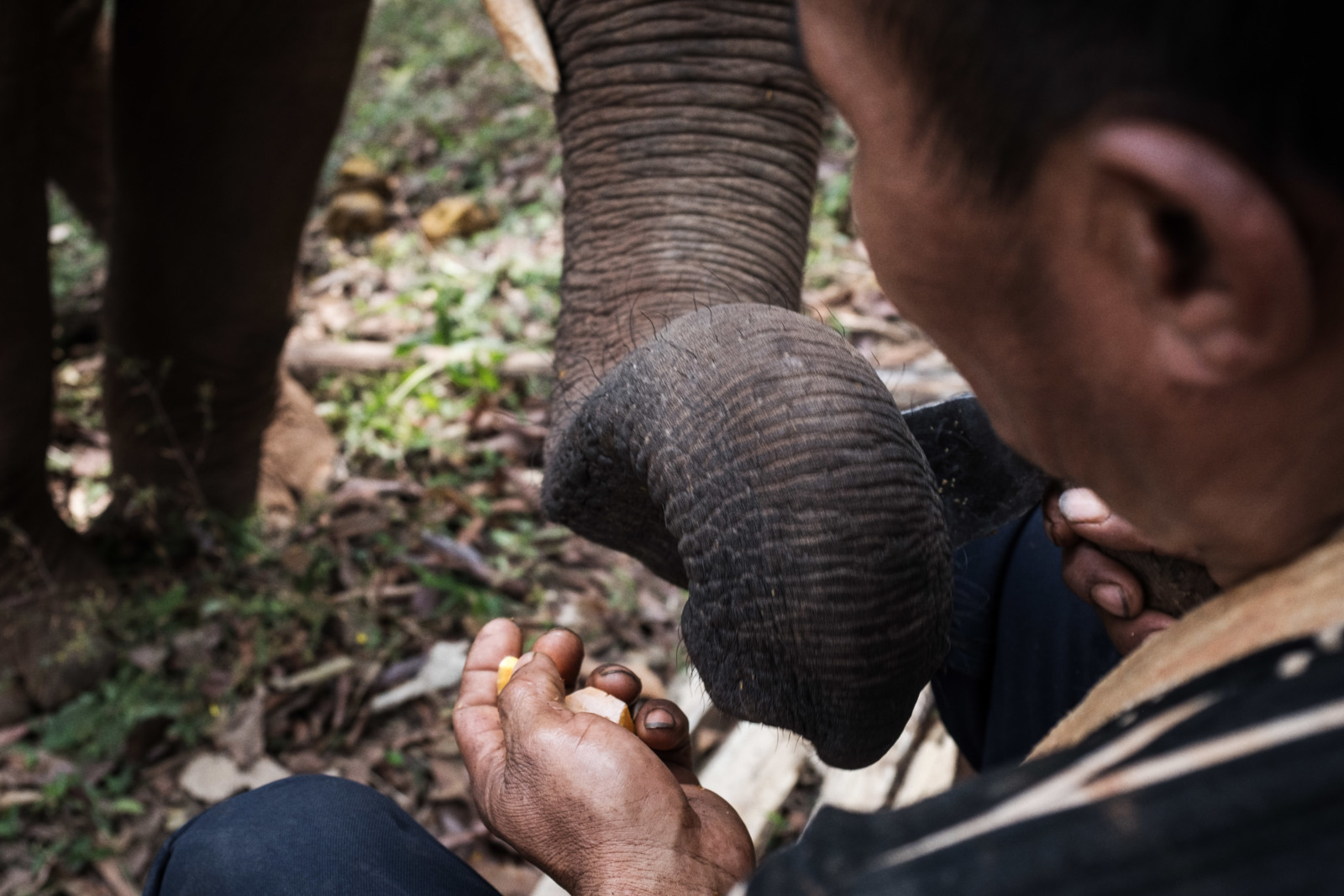I have been traveling extensively for almost one year now and therefore had the chance to visit many places that I was able to photograph. From one of the most dangerous’ jobs at the Mount Ijen to elephants in Chiang Mai, or a sunrise at Mount Bromo. On these journeys, I learned a lot of lessons from my photography and want to share my photography tips.
Since I am mainly a Street Photographer and Travel Photography isn’t that much different, there will be a lot of points, that You may already know if You are an ambitious Street Photographer. For everyone else, who is not really focused on photography, but wants to capture better pictures, the following travel photography tips will help You to see better results.
Wake up early

I am living in Southeast Asia now and the rhythm of life is different here. Although the sun sets at around 5:30 pm, the sunrise is also very early and usually, life is more centered around the natural hours of light.
In Germany, I felt that life is a lot more dictated by work and school schedules. For the usual workday that lasts from 9 to 5, people rush into the office beginning at 8 am, independently if it summer or winter outside.
In Southeast Asia though and especially in smaller villages, the day starts very early. At 5 am You can already hear the cock screaming and the day starts for most people. This habit though isn’t out of pure randomness, but rather practical. People try to use the natural light as much as possible, as it can get very difficult to work or move around in the later hours of the day.
Especially marketplaces are very worth a visit in the early morning hours and another great thing about the early hours is the light, that is totally different from the later hours. So if You want to take great travel photographs, my advice would be to start the day as early as the locals and start documenting their daily routine.
There is a lot of action happening in the morning hours. Women are preparing food for breakfast and lunch. Kids are out playing before the school starts and people are simply enjoying some time before the hustle begins.
Talk to The People
In Street Photography, I preach that the photograph should be candid to represent how the real world really looks like. To tell real stories we can not interact with our subjects and it would just be a dishonest way to mark these posed pictures as Street Photography.
Travel Photography is a little bit different though. Whenever You are photographing in a different place and culture, there is a lot more to the picture than what You immediately see. In addition to the photograph, I would also recommend having at least some explaining text accompanying the picture, as some extraordinary places will leave a lot of questions.
For that reason, I would advise You to talk with the people, or at least try to interact with them. Not everyone will understand Your language and especially if You are not in a touristic area, there will be a very low chance that locals can actually have a thorough conversation with You, but that doesn’t mean that You shouldn’t interact with them.
Learn a few phrases, try to use gestures, just any way of communication is fine. A smile goes a long way as well. This will help You as a photographer to gain more direct access to the local culture and feel less like an outlandish tourist, but more like a local who is exploring this area.
Furthermore, locals can give You really great tips when traveling and they know spots that You wouldn’t find in any travel guide. So don’t be shy and try to speak with the people and live more like a local.
This will make travel photography a lot easier for You.
Focus on Photography

I understand that not every vacation can be used to focus entirely on photography. Sometimes You have other goals, are for example traveling with the family, or just want to relax.
But if You want to capture better Travel Photographs, You have to get out there and invest some time just focusing on photography. When I went to Hanoi for the first time, it was insane. There were so many new things, the traffic was insane and even compared to Berlin it was just one chaotic, but beautiful place.
It took me a few days to get accustomed to this new environment and to survive in the traffic and You should take Your time as well to get used to a foreign place. I wanted to take pictures at first, but I simply couldn’t because everything was so overwhelming. If You feel the same, don’t stress out too much and just take Your time.
Once the initial shock is over though, You should get out and photograph as much as You can. Force Yourself to go out, even if You can still feel the jetlag, or You aren’t feeling that well. Photography is always a game of forcing that luck to happen to You and if You don’t focus on Photography, the great pictures won’t happen.
If You are traveling with family or friends, try to find some time where You can just focus on photography. Having other people with You, that aren’t interested in photography, or are just distracting, will get You in trouble. Find some time for Yourself, even if it is just an hour or so and focus just on photography.
Photography Composition
There are a lot of photographers out there that aren’t believing in any photography theory or composition. To them, photography is more of a “feeling” and they have the eye to arrange good-looking pictures automatically.
The truth is, that there is a universal language that describes how aesthetically pleasing a photograph is. Those composition tips aren’t just some phantasm that is based on a dream from a crazy art professor. These elements are proven to be working and to get better travel photographs, You should learn how to use them.
To some photographers, learning the theoretical part even seems to be some acknowledgment of defeat, as if they wouldn’t have a natural talent like all the other great photographers had.
Instead of those limiting beliefs, You should acknowledge that most of the best photographers have invested endless hours in photography composition, or were studying painting in order to improve their own picture language.
Have a look at the rule of thirds, or how to implement leading lines.
Those are two easy, yet very effective photography composition elements, that can improve Your travel photography tremendously. Study them in Your pictures and why they work or don’t. Have a look at other pictures that You admire and find out why they draw Your attention.
Behind every great picture, there is usually a very solid photography composition that helps to tell the story.
Be Patient

The next travel photography tip, I have already touched a little bit. Not only is it important to stay focused, when You are out looking for great subjects and photography opportunities, You also need to have the patience, to work a scene very thoroughly.
In physics, work is defined as the product of power x time.
Correspondent to that, I would define the number of good travel pictures that You get as the product of time spent photographing x level of focus.
That means, not only the total amount of time that You spent photographing matters, but also the quality of time. It doesn’t make any sense to force Yourself to continue photographing when Your mind goes absolut numb. Rather take a short break and re-focus again and then dive in with full attention.
With being patient I mean that You should work a scene very thoroughly. Taking just one picture isn’t enough and often times You will hate Yourself if You just took a single image and the focus of the camera wasn’t quite right and the picture might turn out blurry.
But there is a lot more to working a scene thoroughly than just getting the technical parts right. In photography, every little detail matters. There are so many little things, that we aren’t noticing at first, that play a huge role in how the photograph does turn out.
Digital photography has the advantage, that we have a nearly endless capacity to take images. Make use of that by keep photographing even though You think You already have the “perfect” shot.
The other aspect of patience means that sometimes, You just have to wait for the perfect photograph to happen. If You spot a great background or place where You think that there is the potential for a great picture, then You should take Your time to just wait. Great pictures don’t always happen on the go, sometimes they need a few hours, to appear.
Always have a camera with You
Nobody likes to miss the perfect opportunity because there wasn’t a camera available. The good thing is, that modern cameras don’t need to be big and therefore can be taken everywhere. Whether it is just a mobile phone, or a small compact camera, when You are on vacation, You should have at least one small device everywhere with You, to capture surprising moments.
Good photos don’t need always a long preparation. There are a lot of moments, where I was just running some errands while traveling, like doing some groceries or handling my laundry, and there is the perfect photo opportunity. Either the sun is showing from its perfect side, or there are other interesting things happening.
When You are traveling, there will be interesting moments, even in the most mundane things. To capture them, make it a habit to have at least a small like the RicohGR with You. These cameras are small but very powerful.
Stay away from touristic places

A lot of people think that the best places are where the most people go to. That places that are very popular must have the best photo opportunities. To some extent, this may be true and there might be very good reasons why some places are more visited by photographers or other tourists.
But as a photographer, a lot of the fun comes from exploring and finding the best spots myself. In fact, I see Street Photography not really as an enclosed Photography genre. It is more about exploring a location, getting to know the people and telling stories with the pictures. When doing this in foreign places under the term of travel photography, You should take a closer look and stay away from touristic places.
Those places merely show the true heart of the local culture and people. You will find a lot of sellers, that are specialized in selling souvenirs, or other items, that are designed for tourists. The restaurants will have food, that is not only overpriced but doesn’t even represent the local cuisine.
To make Your travel photography meaningful, try to stay away from the places that are heavily frequented by other tourists. You can, for example, live with a local family in a homestay which can be an effective and cheap way of getting to know the local culture. You will quickly get recommendations of local places to visit, that aren’t part of any touristic guide and there will be a lot of special moments to cherish.
When I lived in a homestay, the family invited me to a local wedding the very first evening I was living there and it was an insight that I would have never gotten if I would have just stayed in a hotel, or somewhere more touristic.
Another option You should pursue is to connect with local photographers. There are Street Photographers even in the most remote places and they are often willing to show You to their favorite spots. Return that favor, when there are photographers coming to Your hometown and give them some insider tips as well.
Backup Your Photographs
Missing a great shot is one thing that You should avoid, but even more annoying is having all those great shots already saved and edited on Your laptop, but then there is one tiny error, which makes all the effort in vain because the hard drive has a failure.
Instead of having only one system to store Your pictures, You should make multiple copies to be saved in case there may be any malfunction with Your equipment. Digital storage is so inexpensive nowadays, that there is really no excuse to not having multiple ways of backing up Your images.
The easiest way would be to have an external hard drive in addition to the hard drive of Your laptop. There are hard drives out there, that can save more than 1TB, which should be enough even for Your RAW files. Simply plug that external hard drive to Your USB and use that additional storage space.
If You think that external hard drives may be too bulky, You can also use multiple SD-Cards. The storage of these cards can be up to 128GB at the moment, which is also good enough for most travels. Having spare cards is also a must, just in case that one of Your cards for Your camera doesn’t work anymore.
Physical storage is just one way of backing up Your images. Another one is by using a cloud service. You can, for example, use the free storage of Dropbox. There You won’t fit all Your RAW files, but You can easily upload hundreds of JPEGs that are optimized for the Internet. This way, You can save Your favorite images and even if Your gear gets stolen, or does break down completely, You still have a way of recovering Your favorite images.
Don’t stress over equipment too much

My last travel photography tip would be that You shouldn’t think about the travel equipment too much. I present a lot of equipment too and I think it is important for a trip, to have the right kind of gear. But a lot of the time, the right gear is the one, that You are already familiar with and are using at home.
You don’t need a special camera for a foreign place and if You are happy with the pictures You are getting in Your hometown, there won’t be much change while traveling. Photography is a universal discipline, whose rules are applied the same everywhere in the world.
If You know how to compose an image, are not afraid to move closer, and are open to the local people, You will get great travel photographs. If Your camera has 16, 24, or 40 Megapixels won’t change that.
Travel Photography is more about the memories and stories that You are telling, so simply use the equipment that You are comfortable with the most and You will be able to tell the best stories.





















